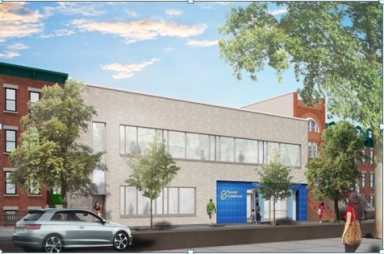Queens Shares Abortion Hub Details as City Aims for Data-Driven Access, Not Drama

New York’s push to fortify abortion access illustrates local governments’ capacity to buffer against national legal tides.
On an unseasonably warm morning in early November, seven public servants in downtown Queens fielded another dozen calls—some desperate, others inquisitive—seeking help that, until recently, was a constitutional guarantee for millions of Americans. Since its launch in late 2022, the New York City Abortion Access Hub has become a lifeline: over 8,000 calls and 3,500 online chats have routed people not just to medical care, but to legal information, financial assistance, and translation in any of 170 languages. Four out of the hub’s seven staff members are navigators, calmly steering clients toward the providers and resources suited to their needs.
The hub’s existence, outlined afresh at a Queens Borough Cabinet meeting this month, reflects the city’s conscious response to the legal earthquake wrought by Dobbs v. Jackson. The Supreme Court’s June 2022 ruling, which annulled five decades of federally protected abortion rights established under Roe v. Wade, did more than redraw state lines—it summoned local governments, from New York to San Francisco, to decide what rights mean in practice. For New York, always eager to burnish its progressive bona fides, the answer mobilized within months: build and promote robust abortion access infrastructure for residents and those traveling from more hostile territory.
Few places in America move as quickly as this city. Within six months of Dobbs, the Department of Health and Mental Hygiene rolled out its Abortion Access Hub, added free abortion medication services at sexual health clinics, and codified a Reproductive Health Care Bill of Rights. These measures aim not merely to preserve an existing status quo but to expand access, particularly for vulnerable and marginalized communities. City officials, like Carmina Bernardo, the hub’s deputy director, frame their mission with characteristic ambition: “a world where abortion care is accessible to all people, without barriers or stigma.”
For most New Yorkers, there is scant immediate danger of abortion vanishing. State law affirms the procedure’s legality up to 24 weeks of pregnancy—roughly the end of the second trimester—and provides for exceptions if maternal health or fetal viability is at risk. Still, policies on the books matter little if the public does not know about them or if, in practice, access is pinched by cost, confusion, or fear. Here, the hub’s function as both switchboard and shield—confidential and broad-based—is key.
The numbers hint at the scale of both need and bureaucratic optimism. More than 8,000 calls since 2022 is a trickle in a city of over 8 million, but it testifies to a persistent demand, especially among those unsure, uninsured, or undocumented. Most callers seek straightforward information: where can I go, what does it cost, will I be safe? The system’s triage—inquiring about zip code, preferred method, insurance, and language—may sound administrative, but it is fundamental to shrinking practical disparities.
Balancing rights and realities in a changing America
With only 1% of abortions in the United States occurring after 21 weeks (per the CDC), most policy debate and service provision center around early-stage terminations. Even so, the city’s vigilance is neither theoretical nor mere PR. The repeal of Roe v. Wade has prompted an interstate flow of abortion seekers—some visible, many hidden—who now look to so-called sanctuary cities for redress. Local officials reckon that clear pathways—free medication at clinics, anti-discrimination protection, tailored referrals—are needed to absorb not just local but national spillover.
Economically, this expanded access comes with material costs and potential benefits. While seven full-time staffers plus related clinic outlays represent a rounding error in New York’s $107 billion budget, the accrual of out-of-state patients prompts concerns about system capacity. So far, according to city health authorities, the increased load remains manageable—an outcome aided by the hub’s triage and by continued support from private clinics and nonprofits. But should numbers swell further, pressure will likely migrate from phone lines to waiting rooms.
Politically, New York’s move is hardly neutral. By championing such services, the city reaffirms its status as a safe haven, drawing contrasts with large swathes of the country accelerating in the opposite direction. The Pew Research Center’s finding that 62% of Americans support abortion legality in all or most cases tempers talk of a deeply divided nation, but the divergence in state and local policies remains pronounced—and fodder for fundraising, litigation, and voter mobilization on both sides.
Globally, New York’s experience is less an outlier than a bellwether. In countries from Ireland to Argentina, abortion rights have tended to expand with social liberalization and urbanization, while recent American developments buck that trend. Yet the city’s approach—fortifying local infrastructure, publicizing rights, and lowering access barriers—mirrors best practices observed in European cities where national laws set a minimum but localities fill the gaps.
We see reason to view New York’s half-year sprint from legal change to practical policy as cautionary evidence that rights, once presumed permanent, demand institutional muscle to persist. The hub’s existence does not obviate national ambiguity or cure all anxieties about clinic closures and creeping legal peril. But in a patchwork regulatory America, the example bodes well for those who understand the politics of health as inseparable from the practice of governance.
No one doubts that abortion will remain a lightning rod, or that city governments alone cannot guarantee access amid shifting federal winds. Yet, as the past year has made clear, the efficacy of American rights now depends not on pronouncements from Washington, but on the administrative competence—and resolute publicity—of city clerks, clinicians, and bureaucracies. For now, New York’s pragmatic reckoning with its obligations sets a salient model for other cities caught between the Supreme Court and the street. ■
Based on reporting from QNS; additional analysis and context by Borough Brief.